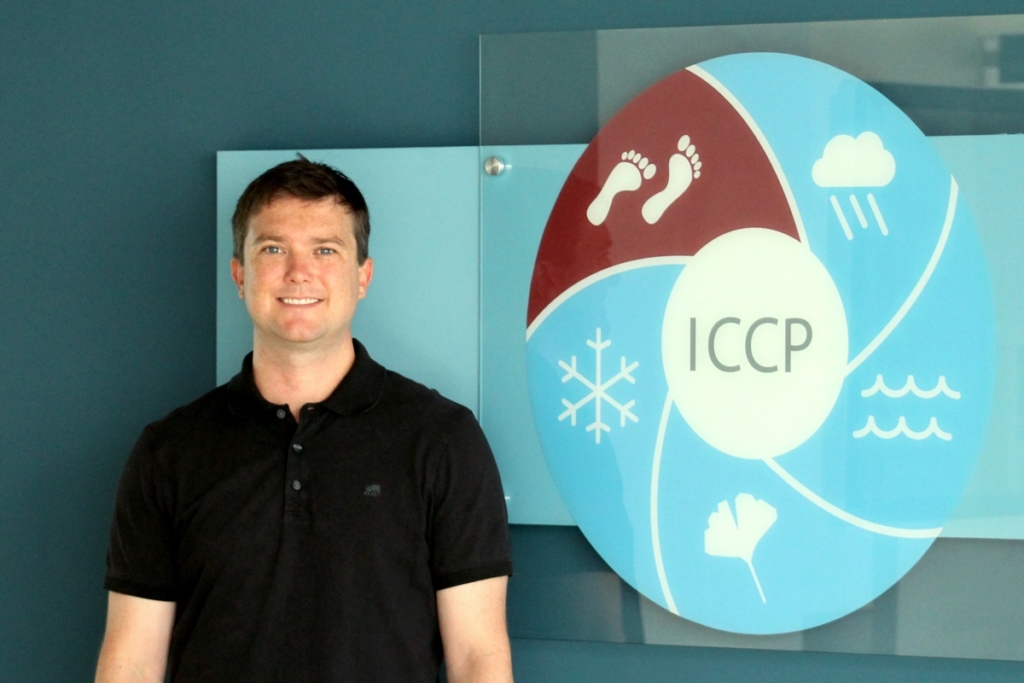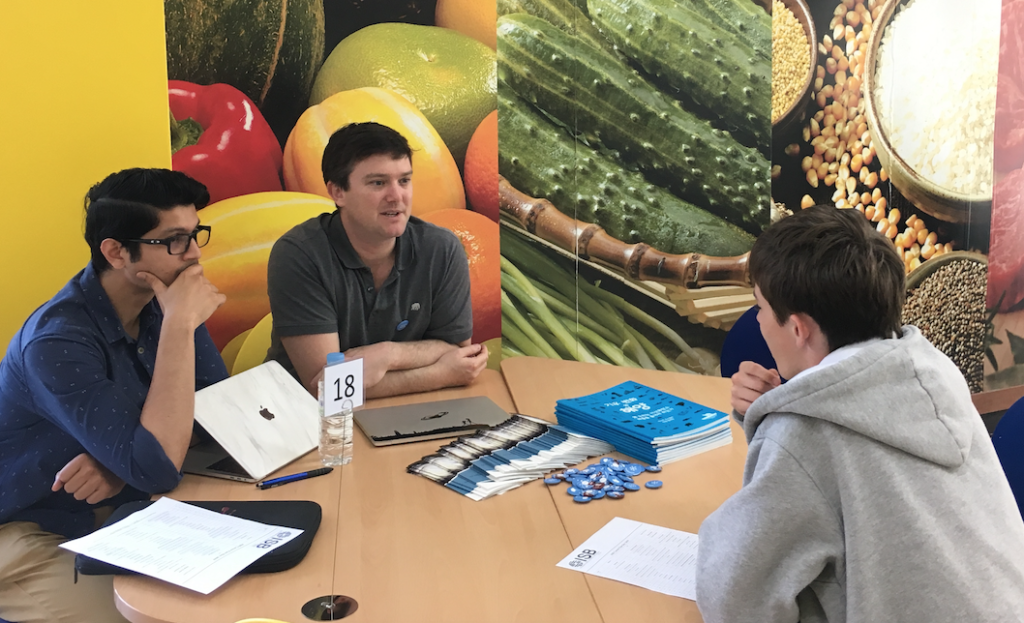
Karl Stein is an Assistant Research Fellow at the IBS Center for Climate Physics (ICCP) in South Korea. He studied oceanography at the University of Hawaii at Manoa, USA, for his Ph.D. In 2013, he joined the Hawaii Natural Energy Institute at UH Manoa to study on the use of large lithium batteries to enable more renewable energy generation on the grid. After this, he moved to Busan, South Korea, to work at ICCP in 2017. His research is focused on the understanding of ocean dynamics and coupled climate variability. “Understanding the climate system is inherently interesting and very challenging, as the system is exceedingly complex. It is also of great practical importance because climate change is one of the foremost challenges humanity currently faces”, says Karl Stein, explaining the driving force of motivation for his research.
Q. What inspired you to become a scientist?
I spent a lot of time in the woods and on the water growing up, which lead to a curiosity about how the natural world works. I was particularly drawn to the ocean through fishing, sailing, and scuba diving, so I decided to pursue a graduate degree in oceanography. As time went on, I realized that climate science is a field of great interest and complexity. With climate change growing more apparent, it is also a field of pressing importance.
Q. Could you explain your recent research?
My recent research project focused on ocean dynamics over glacial cycles for the last 800,000 years. During cold climates, there was much less carbon dioxide in the atmosphere, and a large portion of that carbon was stored in the deep ocean. (The cold climates are called glacial periods by scientists, but are often referred to as “ice ages.”) This process is important, because the decreased atmospheric carbon dioxide reduced the greenhouse effect, causing the earth to cool. However, we are still not sure what controls the exchange of carbon between the ocean and atmosphere over glacial cycles. For our research, we used a unique 800,000 year climate model experiment to examine how increased sea ice around Antartica could isolate the deep ocean from the atmosphere during cold climates. We found that the sea ice could “cap” the ocean at the surface in the Southern Ocean, but also isolate the deep ocean by creating a pool of deep, dense, salty water that did not easily mix with the water above.
Q. You worked at Hawaii Natural Energy Institute in the USA before. What influenced your decision to come to Korea and joined in ICCP?
After my doctorate, I wanted to try to help address climate change more directly with my research, so I accepted a post-doc position at HNEI. There, we studied the use of large lithium batteries to enable more renewable energy generation on the grid. It was a very good experience and I learned a lot, but it turns out I’m much more interested in how the natural world works than the human built world. So when I ran into Axel Timmermann on campus and he told me he was going to lead a climate research center in Busan, I asked if there was a position open for me.
Q. How’s your life in Busan? Do you think Busan people are favorable to foreigners?
The quality of life in Korea is very high and both my wife Elke and I really enjoy living here. Korea is one of my favorite countries for dining out, the cost of living is fairly low, it has a very good health care system, and everything is amazingly convenient here. The mountains and coastline are beautiful and we’ve explored the country a bit by sailing, hiking, and rock climbing. We particularly like Busan because it is on the water, has a milder climate, and is a good sized city in our opinion.
People in Busan, and Korea in general, have been very welcoming and seem proud of their culture and eager to share it. We even get favorable treatment on occasion, like when the city provided sailboats for international crews during the Busan Super Cup race.
Q. You participated in an outreach program for International School of Busan (ISB) Career Day last May. Could you tell us the experience and your opinion on why science outreach is important?

I was impressed with the quality of questions we got from students during ISB career day, and also from the ISB and Busan Foreign School students that attended our Climate Change and Human Migration conference in 2017. Outreach to high school and elementary school students is important to get young people interested in science. I think science training is important for everyone to help develop critical thinking skills. And for a few people, the initial interest can lead to a career in science, which is work that has intrinsic value.
Q. What has been the most influential publication or work in your research?
My PhD work focused on the El Nino – Southern Oscillation (ENSO). There is a sort of paradox in ENSO behavior: ENSO events occur at irregular intervals, between 2 and 7 years apart, but each individual event regularly peaks at the end of the year. There were two main theories at the time that offered explanations: either stochastic noise plus a seasonally changing instability, or chaotic behavior. My PhD work showed that the first theory was almost certainly the correct one. The main related publication is “ENSO Seasonal Synchronization Theory” in the Journal of Climate.
* Karl Stein, Axel Timmermann, Niklas Schneider, Fei-Fei Jin, Malte F. Stueker (2014), ENSO Seasonal Synchronization Theory, 27, 14, 5285-5310, doi: 10.1175/JCLI-D-13-00525.1
Q. Climate scientists use climate models to understand past to future climate change and complicated earth system. Could you explain more about how climate models work and how specifically you use climate model outputs in your research?
Climate models can come in all shapes and sizes, from the very simple to the very complex. However, most of the time people refer to climate models they mean the most complex models that require supercomputers to run. They consist of individual models of the global ocean, atmosphere, land, and ice that are all interacting with each other. The newest climate models are called “earth system models” because they include not only the physics but also chemical and biological processes that influence the climate. We use these models to run experiments to gain understanding of the climate system because is impossible to run a natural experiment on the entire planet! At ICCP, we are currently running a very high resolution version of the Community Earth System Model on our supercomputer Aleph.
Climate models can also be used to examine how the climate will change in the future. However, one of the largest factors that will determine climate change is the amount of greenhouse gas emissions that humans produce. Because human behavior is very difficult to predict, climate scientists use emissions “scenarios” to force the models. Modeling groups all over the world have created and run a variety of climate models, so we can examine the model uncertainty vs the human behavior uncertainty, which are roughly comparable based on the previous generation of models. We can also run many simulations of the same climate model side by side, known as a Large Ensembles, to improve statistical predictions and determination of whether climate changes are due to natural “internal” variability or a forced response to global warming.
For my previous ENSO research, climate model output was essential because ENSO events only happen every few years, so we simply don’t have long enough observations. My recent research project used output from an “intermediate” climate model, which is a simplified climate model that uses a much larger grid. The advantage is that the model is inexpensive to run and so the experiments can cover a very long time periods, which is important when you are examining the paleo climate over many hundred thousand years.
Q. What is your future research plan?
I have two main research projects planned at the moment. The first is a group project that involves coupling an ice sheet model to the CESM climate model. Ice sheets are the land based ice that currently covers Greenland and Antartica. Including these ice sheets in climate models is critically important to predict future sea level rise. I am also very interested in analyzing the output from the CESM Large Ensemble experiment we will be starting in the fall in collaboration with the US National Center for Atmospheric Research (NCAR).